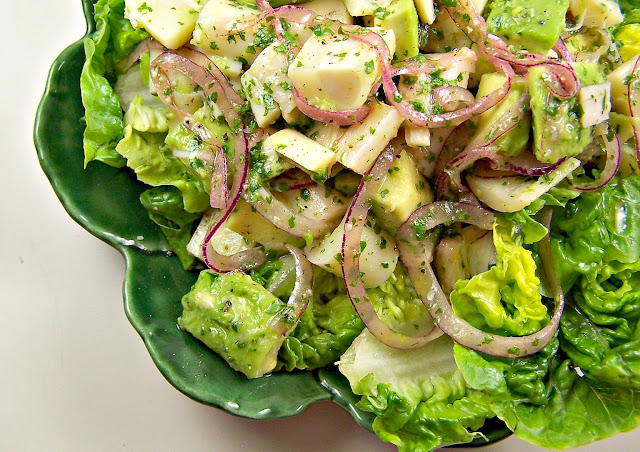A wonderful winter (or summer!) salad
I’m working on the finishing touches of Wine-Knows
upcoming trip to Chile & Argentina.
Hearts of palm are a big deal in both countries and every day my lunch
is a fresh hearts of palm salad (it’s usually served with a simple vinaigrette and
tomatoes). While fresh hearts of palm
are unavailable in the U.S., Trader Joe’s and Costco carry the product
canned. Check out this scrumptious salad, one of my
most requested recipes.
Serves 6-8 persons
Ingredients for Vinagrette:
- Small clove of garlic
- 1/4 cup fresh cilantro leaves (stems removed)
- 3 tablespoons fresh lemon juice
- 1 teaspoon lemon zest
- 1/2 teaspoon sugar
- 1/4 teaspoon salt
- 1/2 cup good quality EVOO
Salad Ingredients
- 14 oz jar of hearts of palm
- 4 medium ripe, but firm, avocados
- 1 small red onion
- 1 head of Romaine lettuce
- Optional: if its tomato season, I sometimes add bite size pieces
Make the Vinagrette:
Mix first 5 ingredients in a food processor,
then slow drizzle in the olive oil with machine still running.
Assemble the salad:
Drain hearts of palm and cut into bite size
pieces. Place in salad bowl, along with
thinly sliced red onion. Cut each avocado
into about 6-8 pieces (as you toss the salad, the avocados will disintegrate a
little, so start with larger pieces). Add avocado and head of Romaine torn in bite
size pieces. Mix in salad dressing and
gently toss. Adjust for salt and pepper. (Add leftover Turkey for a main course salad).
Bon provecha!



